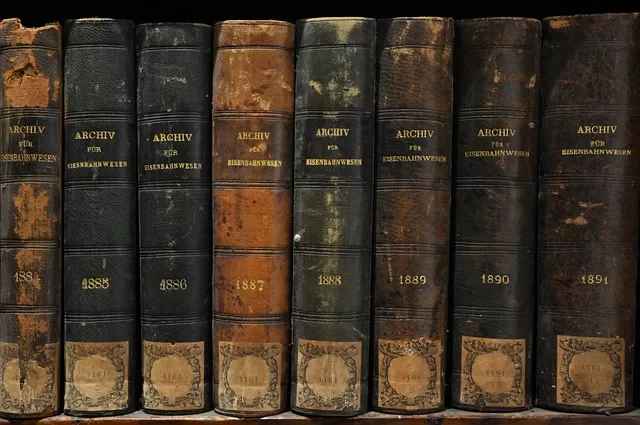Dream Hunter Dystopian Books
Welcome to the shadows of a dystopian world. Where nightmares become reality in our exploration of the top dystopian books that will haunt your dreams. From the chilling depths of George Orwell’s “1984” to the haunting apocalyptic landscapes of Margaret Atwood’s “The Handmaid’s Tale.”These narratives offer a chilling glimpse into the dark underbelly of society.
With intricate world-building, thought-provoking themes, and relatable characters. These dystopian books transport readers to harrowing futures where governments have unchecked power. Societies are plagued by oppression, and humans grapple with the consequences of their actions. Through these stunning tales, authors unveil the pitfalls of unrestrained technology. Political corruption, and the delicate balance between reality and fiction.
As you turn the pages, prepare to be transported to dystopian worlds where survival is uncertain. Freedoms are stripped away and hope flickers in the shadows. These stories act as cautionary reminders of the potential consequences of our actions. And the importance of maintaining a vigilant eye on the world around us.
Discover the allure of dystopian books and the eerie thrill of exploring these dark realities. That will force you to question the very fabric of our society. Are you ready to see these suspenseful tales through the pages of these haunting books? Step into the shadows and find out for yourself.
Characteristics of Dystopian Books
Dystopian books within literature are a genre that delights readers with its dark and often unsettling portrayal of the future. While each dystopian book offers a unique perspective. Several common characteristics define the genre.
Firstly, dystopian books often feature a bleak and oppressive society. Where individuals are stripped of their basic human rights and freedoms. This can take the form of totalitarian governments. Oppressive regimes, or even apocalyptic landscapes. The world-building in dystopian books is meticulously crafted to create a sense of unease and tension. Drawing readers deeper into the narrative.
Secondly, dystopian books often explore themes of power and control. Whether it’s a government using surveillance to maintain order or a society grappling with the consequences of its actions. These narratives delve into the complex dynamics of authority and the consequences of unchecked power. By shining a light on these themes. Dystopian literature forces readers to question their own beliefs and the systems that govern society.
Lastly, this genre of books features relatable and compelling characters who navigate the treacherous landscapes of their worlds. These characters often find themselves pitted against powerful forces. Struggling to maintain their humanity in the face of adversity. Through their journeys, readers can connect with the human experiences of fear, hope, and resilience.
Impact and Influence of Dystopian Books in Literature
Dystopian literature has had a profound impact on both the literary world and society at large. These books act as cautionary tales. Warning readers of the potential dangers that can arise from unchecked power and societal complacency.
One of the key impacts of dystopian books is their ability to spark critical thinking and encourage readers to question the status quo. Through the exploration of dark and often unsettling futures. These books challenge readers to examine their own beliefs and the systems that govern their lives. By shining a light on the potential consequences of inaction and blind obedience. Dystopian literature serves as a powerful catalyst for change.
Additionally, dystopian literature has influenced popular culture and the arts. Many dystopian books have been adapted into successful films and television series. Further expanding their reach and impact. The themes and imagery of dystopian worlds have seeped into our collective consciousness. Shaping our understanding of the potential pitfalls of society.
Best Dystopian Books
“1984” by George Orwell
Considered a timeless classic in the dystopian books genre. George Orwell’s “1984” paints a chilling picture of a totalitarian regime where individualism is crushed. And dissent is ruthlessly suppressed. Set in a future where Big Brother watches everyone. “1984” explores the dangers of mass surveillance and government propaganda. The erosion of personal freedoms.
In this dystopian book world, the protagonist, Winston Smith, works for the Party. Rewriting historical records to align with the Party’s propaganda. As Winston begins to question the Party’s version of reality. He undertakes a dangerous journey to maintain his individuality and challenge the oppressive regime.
Orwell’s masterful storytelling and vivid prose make “1984”. A haunting and thought-provoking read. The novel’s themes of government control, and manipulation of truth. The power of language continues to resonate with readers today. “1984” serves as a stark reminder of the dangers of authoritarianism and the importance of defending individual liberties.
“Brave New World” by Aldous Huxley
Aldous Huxley’s “Brave New World” presents a dystopian future where society is divided into rigid social classes. All the while controlled through the use of drugs and genetic engineering. Set in a world where pleasure and conformity are valued above all else. “Brave New World” explores the dehumanizing effects of a society driven by consumerism and instant gratification.
The novel follows the story of Bernard Marx. A man who doesn’t quite fit into the rigid caste system of the World State. As Bernard begins to question the principles of his society. He becomes entangled in a rebellion that challenges the very foundations of the World State.
Huxley’s “Brave New World” is a chilling critique of a society that sacrifices individuality. And freedom in exchange for stability and uniformity. The novel raises important questions about the true nature of happiness and the cost of conformity. With its vivid imagery and thought-provoking themes. “Brave New World” continues to be a compelling and unsettling read.
“The Handmaid’s Tale” by Margaret Atwood
In Margaret Atwood’s “The Handmaid’s Tale.” We are transported to the Republic of Gilead. A totalitarian society where women are stripped of their rights and reduced to their reproductive capabilities. Set in a not-so-distant future, the novel follows Offred. A handmaid assigned to a high-ranking official for the sole purpose of bearing his child.
Atwood’s masterful storytelling paints a bleak picture of a world where women are subjected to strict rules and religious doctrine. The oppressive regime enforces its control through surveillance. Public executions, and the manipulation of language. Through Offred’s eyes, we witness the inner turmoil and resilience of a woman. Fighting to hold onto her identity in the face of extreme oppression.
“The Handmaid’s Tale” serves as a harrowing reminder of the fragility of human rights and the dangers of complacency. Atwood’s exploration of power dynamics and the dehumanization of women resonates deeply. Forcing readers to confront the potential consequences of a society driven by fear and control.
“Fahrenheit 451” by Ray Bradbury
Ray Bradbury’s “Fahrenheit 451” takes us to a future where books are banned. Intellectual curiosity is suppressed. Set in a society where “firemen” burn books instead of putting out fires. The novel follows Guy Montag, a fireman who begins to question his role in society. That values mindless entertainment over critical thinking.
Bradbury’s vivid imagery and poetic prose create a world devoid of intellectual stimulation. Where television screens dominate every aspect of life. The constant bombardment of shallow entertainment serves as a distraction. From the oppressive regime’s true intentions. As Montag embarks on a journey of self-discovery. Readers are confronted with the consequences of conformity and the importance of preserving knowledge and independent thought.
“Fahrenheit 451” serves as a cautionary tale about the dangers of censorship and the suppression of ideas. Bradbury’s exploration of the power of literature and the human need for intellectual freedom. Reminds us of the importance of challenging societal norms and defending the right to access information.
“The Hunger Games” by Suzanne Collins
Suzanne Collins’ “The Hunger Games” introduces us to a dystopian world divided into twelve districts. Each is forced to offer up a teenage tribute to participate in a televised fight to the death. Set in the fictional nation of Panem. The novel follows Katniss Everdeen as she navigates the brutal Hunger Games arena while also challenging the oppressive Capitol’s control.
Collins’ gripping narrative explores themes of survival, sacrifice, and the corrupting influence of power. As Katniss fights for her life, she becomes a symbol of resistance against the Capitol’s oppression, sparking a rebellion that threatens to dismantle the existing power structure. Through the lens of a dystopian game show, Collins forces readers to examine the ethical implications of entertainment and the exploitation of human suffering for mass consumption.
“The Hunger Games” serves as a stark reminder of the consequences of unchecked power and the importance of standing up against injustice. Collins’s exploration of the human spirit’s resilience in the face of adversity resonates deeply, inspiring readers to question societal norms and fight for a more just world.
The Power- Naomi Alderman
In Ottawa’s Minto Park, there stands a monument that holds a significant meaning. This monument is dedicated to the memory of women who have lost their lives at the hands of men. Like many other monuments in Canada’s capital, it bears inscriptions in both English and French, each with its unique translation. The French inscription reads, “à la mémoire de toutes les femmes qui ont subi jusqu’à la mort la violence des hommes,” which translates to “in memory of all women who have suffered violence from men until death.” On the other hand, the English inscription states, “to honor and to grieve all women abused and murdered by men.” At first glance, it is unclear whether these inscriptions are translations of each other or separate but related statements, both shedding light on the women they commemorate.
Naomi Alderman Novel
Naomi Alderman’s novel, “The Power,” delves into the complexities of our present society, intertwining history, wars, and gender politics with a sudden and widespread manifestation of “electrostatic power” in women. In this fictional world, young girls wake up one day to discover that they possess the ability to generate powerful electric shocks from their bodies. These shocks are made possible by specialized muscles called “skeins” located at their collarbones. The shocks can range from mild stings to lethal jolts of electricity. This newfound power is not limited to a select few; it is almost uniformly distributed among individuals with two X chromosomes. However, women differ in their capacity to control and direct this power, leading to a massive upheaval of gender dynamics worldwide.
Dystopian Books and Insight into Personal Experiences
Alderman explores the transformative effects of this power through the perspectives of various characters. Roxy, the daughter of a British drug lord, provides insight into the personal experiences of those directly affected. Margot, the mayor of an unnamed city in the United States, offers a glimpse into the political ramifications of this power shift. Allie, a young girl living in an abusive foster home in Alabama, becomes a central figure in a new religion that revolves around women and their lightning-like abilities. Lastly, Tunde, a Nigerian journalist, provides a global perspective by documenting the events unfolding around the world. Through these characters, Alderman paints a vivid picture of a world in flux, where power dynamics are redefined, and the role of women takes on a new significance.
Never let me go by Kazuo Ishiguro
Never Let Me Go is a brilliant science fiction novel set in a prestigious English boarding school called Hailsham. Taking place in the 1970s with a slightly futuristic twist, the story follows Kathy’s upbringing at Hailsham and her adult life in the 1990s, creating a sense of mystery and intrigue. As readers, we are drawn into the enigmatic world of Hailsham, where secrets slowly unravel throughout the narrative.
One of the strengths of Never Let Me Go is its ability to keep readers on their toes. Author Kazuo Ishiguro skillfully reveals information at a measured pace, allowing us to uncover the truth behind Hailsham and its students, particularly Kathy, Tommy, and Ruth. The element of mystery adds depth to the story, making it a compelling read that is best experienced without prior knowledge.
In addition to its mystery, Never Let Me Go explores themes of love, growing up, and societal influences. The novel delves into the complexities of relationships and the impact of society on individuals, offering a thought-provoking commentary on dystopian societies and their parallels to our history. The eerie atmosphere of the book adds a chilling undertone that keeps readers engaged in the characters’ journeys.
While there were moments where I felt disconnected from the characters and found certain scenes lacking impact, the unique blend of science fiction, British setting, and young adult themes in Never Let Me Go make it a compelling read for readers of all ages. Kazuo Ishiguro’s reputation as a renowned author is evident in this novel, showcasing his storytelling prowess.
Parable of the Sower by Octavia E. Butler
Winner of the MacArthur “Genius” Grant The novel “Parable of the Sower” is told through the perspective of Lauren Olamina. A young resident of Orange County in the year 2024. The setting is the United States which is spiraling into chaos due to poverty, lawlessness, and the rise of oligarchy, all exacerbated by the effects of global warming. Initially, things are bleak for Lauren’s community, which represents the last remnants of the middle class, and the situation only deteriorates further. The impoverished population faces extreme hardships right from the start, painting a grim picture of society’s collapse.
Divided into two major parts of equal length, the narrative unfolds as Lauren prepares for the impending crisis in the first half of the book. She focuses on equipping her community with survival skills, such as creating bug-out bags and studying topics like foraging and first aid. Additionally, Lauren introduces the concept of a new religion called “Earthseed,” centered around embracing change as a divine force that individuals must navigate. She develops the tenets of this religion in secrecy, laying the foundation for a new belief system amidst the chaos.
Dystopian Books- Parable of the Sower
As the story progresses into the second half, Lauren’s community is decimated, prompting her to embark on a journey north with a small group of survivors in search of a new home. They become part of a mass migration towards the north, encountering challenges and threats along the way. Despite the hardships, Lauren shares the teachings of Earthseed with her companions, offering a glimmer of hope amidst the turmoil. The novel also touches on Lauren’s unique condition of hyper-empathy, although it does not significantly impact the plot or character development. Overall, the book presents a bleak yet thought-provoking narrative that explores themes of survival, resilience, and the search for meaning in a dystopian world.
A Clock Orange by Anthony Sturgess
In A Clockwork Orange, Anthony Burgess masterfully crafts a bone-chilling and boundary-pushing vision of the future. Unlike other contenders on the list, the tale revolves around youth defiance towards authority but steers away from the conventional charming and inspiring narratives. Our narrative is led by Alex, a disinterested and morally corrupt teenage gang leader, whose pleasure in violence coexists with an inexplicable fascination for classical music. Yet, as he finds himself sentenced to state-sanctioned aversion therapy for his despicable crimes, the already blurred lines of morality become even more indistinct.
Burgess employs a truly ingenious use of slang and dialect, capturing the essence of Alex’s twisted world in a way that is both stimulating and unsettling. Moreover, the controversial finale of the novel has sparked intense debates among fans and scholars alike, as they continue to ponder the true motivations and implications of the protagonist’s actions. It is within this narrative context that A Clockwork Orange firmly establishes itself as an exemplary work of dystopian literature done right.
The film adaptation of A Clockwork Orange, expertly crafted by director Stanley Kubrick, serves as an artistic interpretation of Burgess’ nightmarish universe. Kubrick adeptly translates the elements that make the novel so glamorous onto the screen, allowing viewers to fully immerse themselves in the ever-deepening darkness that permeates the story. Just as Burgess’ novel challenges societal norms and conventions, Kubrick’s adaptation effectively captures the unsettling atmosphere and visual style that perfectly mirrors the dystopian themes explored in the source material. A Clockwork Orange, both in its written and cinematic form, stands as a chilling testament to the power of dystopian storytelling.
Dystopian Books- The Stand by Stephen King
Stephen King’s 1978 dystopian novel, The Stand, is a masterpiece of horror fiction that spans over 1,000 pages. The story revolves around a man who escapes from a biological testing facility, unknowingly releasing a deadly flu virus that wipes out 99 percent of the world’s population. As the survivors struggle to rebuild society, two leaders with contrasting approaches to leadership emerge, leading to a battle for the future of humanity.
The Stand is a gripping tale that delves into themes of good versus evil, survival, and the resilience of the human spirit. Stephen King’s writing is rich in detail, painting a vivid picture of a post-apocalyptic world where the few remaining survivors must navigate a dangerous landscape filled with challenges and threats. The novel is a testament to King’s storytelling prowess and his ability to create complex characters that resonate with readers.
With its intricate plot, well-developed characters, and thought-provoking themes, The Stand stands out as one of Stephen King’s most iconic works. The novel has amazed readers for decades with its blend of horror, suspense, and emotional depth. As a fan of Stephen King or a newcomer to his work, The Stand is a must-read that will leave you on the edge of your seat until the very end.














































































































